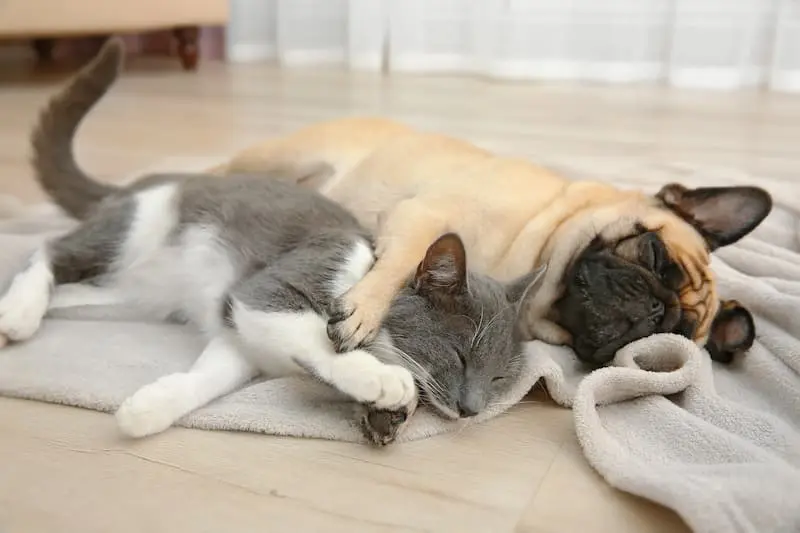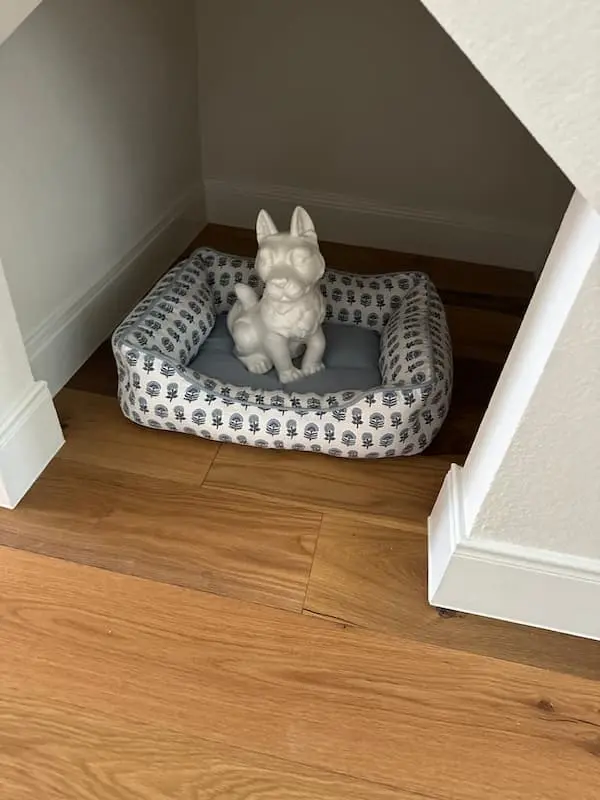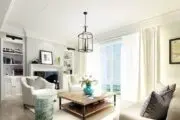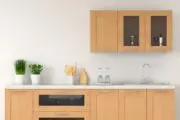Home design is going to the dogs, with many pet-owning households across North America. The popularity of pet ownership is redefining what a perfect family home looks like, making sure all household members are accounted for in the design- even those with four legs.
The American Pet Products Association (APPA) says that 45 percent of U.S. households own a dog, with another 26 percent owning a cat. According to the Canadian Animal Health Institute (CAHI), 60 percent of Canadian households have a pet.
Interior design is evolving to support the lifestyle needs of homeowners and their canine and feline companions, with community-based pet amenities, as well as ways to integrate stylish design features for animals at home.
Location, location, location
Home design matters for pets, but the community where a home is located is important.
Dog owners need certain amenities close to home, including access to green space, along with safe areas for dog walking. Ideally, your community would have a dog park, or walking trails.
Given the vast number of homeowners with pets and recognizing the important role that housing and community design play in facilitating a pet-friendly lifestyle, many new communities are being designed with amenities and social events geared for pets.
Cameron Cook, community marketing and retail programming director at Walsh, a pet-friendly master-planned community near Fort Worth, TX says, “We intentionally designed the neighborhood so that each home has a park or green space within walking distance.”
“Each park is pet-friendly (on leash) and equipped with Dogipots. The entire neighborhood is connected via sidewalks, trails and pathways,” making it easier to take your dog for a stroll, he says.
Walsh also has nature trails, off-leash parks and ongoing dog-related events in the lifestyle calendar, including “Yappy Hour” and Halloween pet costume contests.
Fenced-in yard
A home with a yard is desirable for pet owners, but to make the most of outdoor space, homeowners should design the area with their pet’s safety and enjoyment in mind.
A must is a fenced-in area. Any material will do, if there are no gaps for Fido to sneak through. Material choices will influence your home’s aesthetic, so choose something that is cohesive with your home’s exterior. Some HOAs require certain materials to be used, so check that out first.
If you’ve got space, include a dog run for extra fun and exercise. It’s especially useful with larger breed dogs.
For homeowners with large properties, an invisible fence is good way to let your pet run free, but still stay within a safe distance.
In the yard, be mindful of landscaping choices. “Choose, pet-friendly landscaping. Avoid toxic plants to provide a safe outdoor space for pets to play,” says marketing strategy consultant for Walsh, Malee Tobias of Malee Tobias Strategies.
Durable and low-maintenance materials
Pets put household finishes and materials to the test on a regular basis, so choosing easy-to-clean materials that will stand up to messes, pet hair and four-legged traffic is essential.
Hard floors are easiest to keep clean from pet hair and other messes, but not all hard materials are well-suited to the pitter patter of paws, because they scratch easily. Most tiles, whether stone, ceramic or porcelain, are fairly scratch-resistant, especially if they are glazed and sealed.
Hardwood flooring is relatively easy to keep clean but is prone to scratches and wear. For a hardwood look with pet-friendly durability, luxury vinyl plank is a good alternative.
If you go for carpet, choose something sturdy and stain resistant, such as a Berber-style. “Upgraded rug pads underneath resist soaking in liquids and help to avoid stains,” says Tobias.
Furniture should be easy to clean, with leather or stain-resistant fabric. Choose textiles that are machine washable.
A mudroom is magic
Pet owners that have a well-designed mudroom pat themselves on the back every time they come in from walking the dog on a rainy day. Not only does a mudroom contain mess from outside, but it’s also the perfect space to add design features for your furry friend, including the all-important dog wash, and concealed storage for toys and dog food.
The mudroom is also a good spot for a litter box for a cat, ideal if you have an out-of-the-way space within the space.
It’s worth installing a fan that vents outside in the mudroom, to divert pet odors away.
Elevate the aesthetic with built-in features
Food and water dishes can take up a lot of room and be messy. The answer is to install a built-in feeding system. There are stylish, creative solutions, including pull-out drawers in the underused toe-kick space in the kitchen cabinetry or a built-in feeding system as part of the kitchen island.
Trending in the kitchen for homeowners are pot fillers, that are both convenient and add a subtle splash of style. Use the same concept with your pet’s dishes, with a pet-sized pot filler located above a feeding area to easily refill water dishes.
Even if your pet curls up at night with you, having their own bed space is recommended. Invest in a hidden dog bed or crate, built into cabinetry, with an open-style cabinet face. There are also several stylish dog crate options that double as furniture, blending right into the decor.
Another popular option takes advantage of your home’s architectural features to make a cozy spot for your pet. For example, buyers of David Weekley Homes models in Walsh have “opted for the built-in dog area under the staircase,” says Cook.
Pet-focused smart home tech
Need to leave your pet on their own while you go out to work? Not to worry. With a host of smart tech gadgets and systems, homeowners can keep tabs on their animals.
Pet cameras let you monitor your pet remotely and make sure that they are safe and secure. Two-way audio lets you remind them omnisciently to stay off the couch or offer praise for good behavior.
Automatic pet feeders can be directed using an app, which are great for cat owners, especially if you are going to be out of the home for an extended period.
Pet doors are a convenient way for your pet to let themselves out whenever they want, but for added safety, put in an automatic pet door that works on a motion sensor, opening on demand, and is securely closed otherwise.
Cat couture
Not a dog person? Cats benefit from pet-focused interior design, too.
Popular are catios, which are outdoor enclosures where cats can play safely and get fresh air. They range in size from small, single-level enclosures, to larger, playground-style with cat-friendly toys and platforms.
Indoor cats will enjoy “walkways, perches and elevated spaces to climb and explore,” says Tobias.
Trending are built-in, wall-mounted cat beds with plush textiles and sleek finishes, that add visual interest, as well as somewhere stylish for kitty to nap.
Pet-friendly home wish list
Pet-friendly homes are designed function first. Here are some additional features that pet-owning households will appreciate
- Central vacuum, for quick and easy cleanup.
- Upgraded HVAC systems with high-end filtration systems to clean the air of pet dander.
- Increased insulation and soundproofing to muffle barking noise, inside and out.
- A bathtub. Even if you are a shower-only person, and if you’ve got a dog wash outside or in the mudroom, having an additional bathtub somewhere in the house is useful.
- Bay window. It’s the perfect viewing spot for four-legged friends to watch the world go by, It’s even better if there is a window seat attached.









